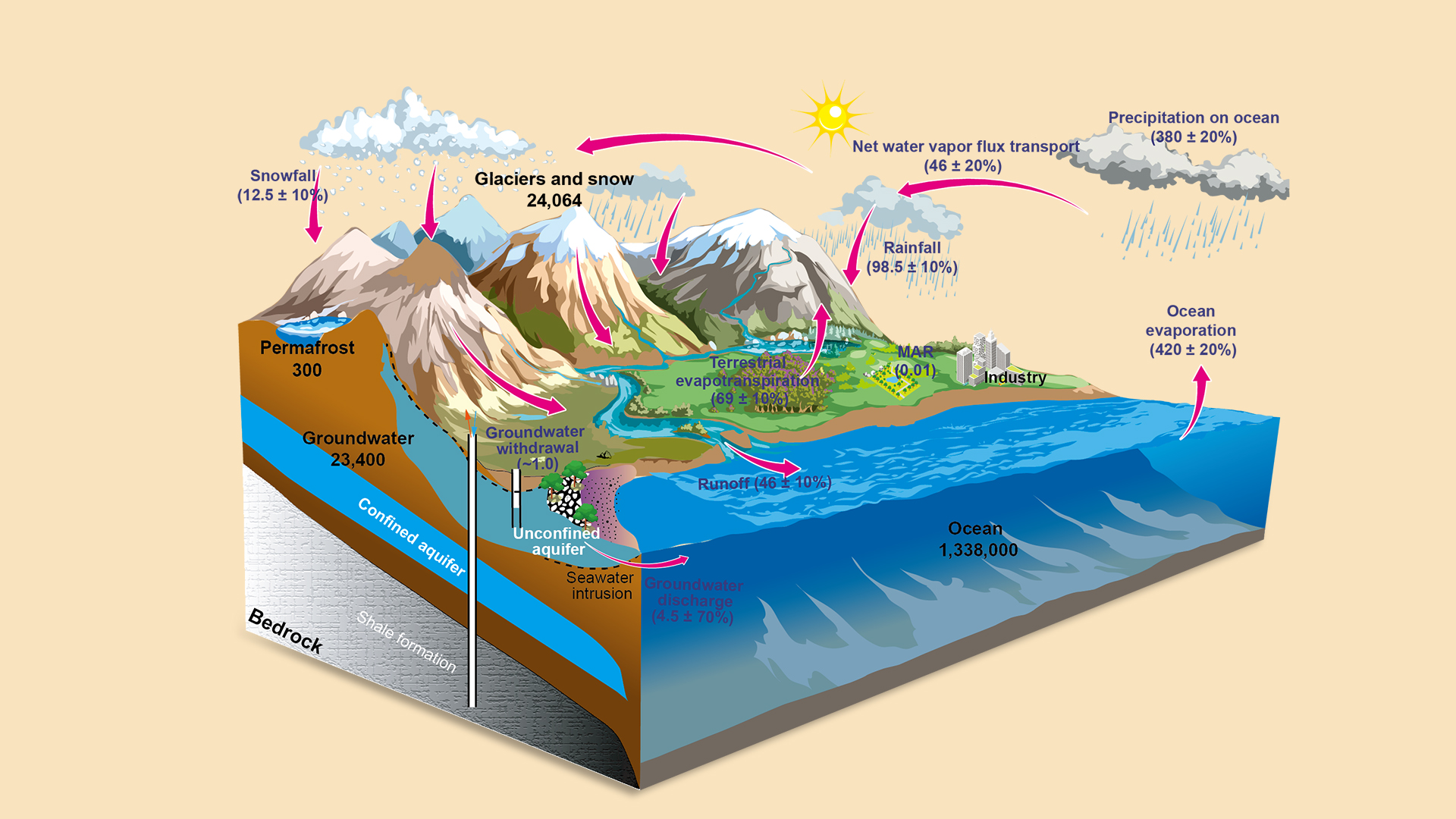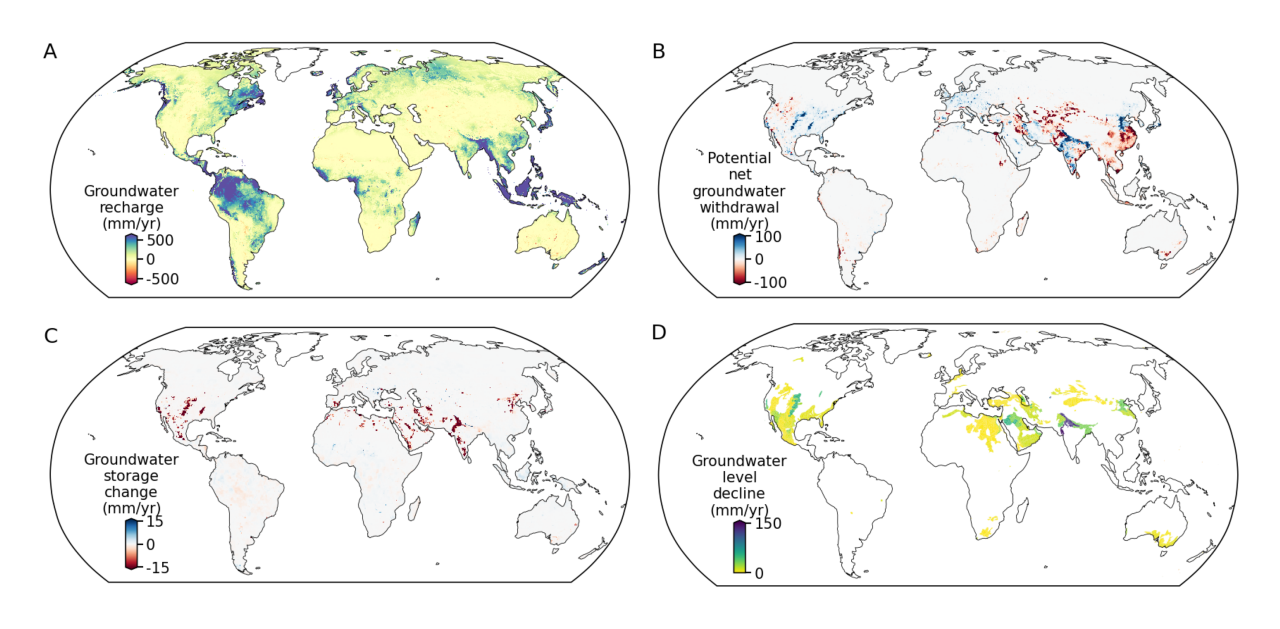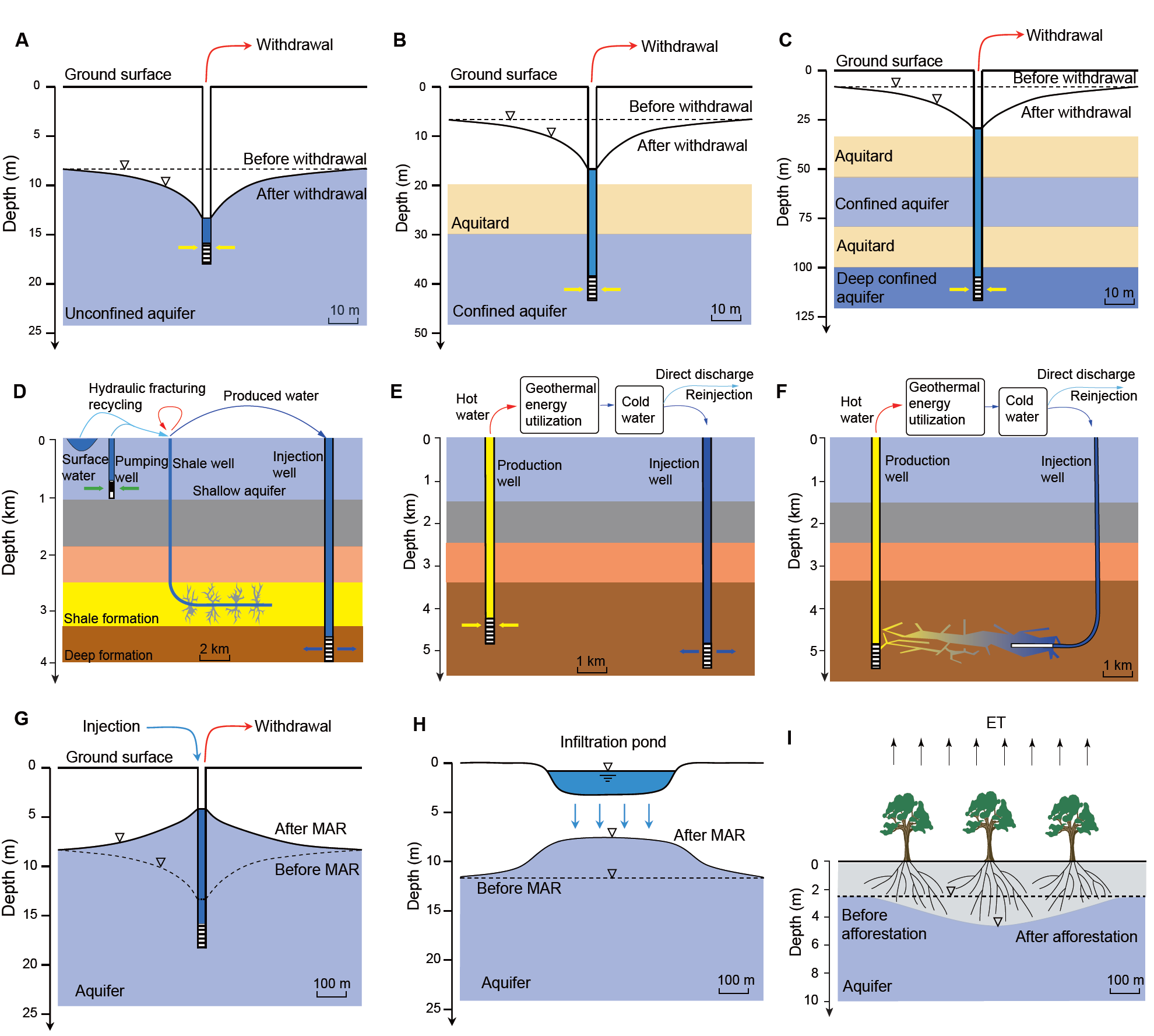Groundwater is the largest available freshwater resource and forms an active component of the global water cycle. It serves as the primary freshwater source for billions of people, providing drinking water to numerous communities. Moreover, groundwater supplies over 40% of the global irrigation demand and is becoming increasingly important in mitigating water scarcity induced by climate change.
Over the past decades, climate change and other various anthropogenic activities have significantly altered groundwater recharge, discharge, flow, storage, and distribution. To obtain a more comprehensive understanding of the state of global groundwater, a synthesis of its changing nature in the global water cycle is urgently required.

The collaborative research team led by the School of Environmental Science and Engineering at the Southern University of Science and Technology (SUSTech) has made a significant breakthrough in understanding groundwater resources. The team, consisting of Associate Professor Xingxing Kuang and Chair Professors Chunmiao Zheng and Junguo Liu, has published a comprehensive review paper that summarizes the changes of groundwater in the global water cycle induced by climate change and other human activities in past decades. It provides significant insights into the challenges and strategies for achieving sustainable utilization of global groundwater resources.
Their work, entitled “The changing nature of groundwater in the global water cycle”, has been published in the prestigious journal Science.
The paper comprehensively reviews the influences of climatological and anthropogenic factors on regional and global transformations in groundwater dynamics. Firstly, climate change causes shifts in groundwater recharge. The average of current global groundwater recharge ranges from ~12,000 to ~17,000 km3/yr, but climate-driven modifications induce shifts in groundwater recharge rates across continents. The accuracy of the global groundwater recharge prediction model mainly depends on the uncertainty of future precipitation intensity and the settings of hydrological and hydrogeological processes. Secondly, glacier retreat causes increased contribution of groundwater discharge to runoff. Glacier volume is predicted to decrease by approximately 20% to 50% in the year 2100 compared to 2015. Glacial meltwater infiltrates into the subsurface, sustaining a stable groundwater discharge to streams during dry seasons. Thirdly, permafrost thaw enhances groundwater flow. There are 14 to 16 million km2 of permafrost on the Earth’s surface, which is expected to continue degrading with global warming in the coming decades. Permafrost thaw fosters increased rainfall infiltration, amplifies groundwater storage, creates new subsurface flow pathways, and increases groundwater discharge to streamflow.
Other anthropogenic activities include groundwater withdrawal, unconventional oil and gas production, geothermal energy exploration, managed aquifer recharge (MAR), afforestation, land reclamation, urbanization, and international food trade. These undertakings engender groundwater withdrawal and injection, reshaping regional groundwater flow regimes, impacting water levels and groundwater storage, and redistributing embedded groundwater in foods globally. Excessive groundwater exploitation results in a substantial depletion of groundwater storage. However, under the complex circumstances of climate change, both the demand and extraction of groundwater resources are expected to increase in the future. The global extraction of groundwater by 2050 is predicted to reach 1,250±118 km3/yr, which represents a significant increase compared to the extraction levels of 310-460 km3/yr in 1960, 570-790 km3/yr in 2000 and 1,000 km3/yr in 2010. MAR has been implemented to achieve sustainable water resource management and is expected to exceed 10% of global groundwater withdrawal with the advancement of technology.

Figure 1. Global hydrological cycle with its components. The global water fluxes (×1000 km3/yr) in brackets and water storage (×1000 km3) are presented. The upward arrows show annual evaporation from the ocean and terrestrial evapotranspiration. Antarctica was not included in the terrestrial water balance.
Groundwater withdrawal transfers fresh water from long-term storage to the active water cycle, with much of the groundwater ultimately returns to the ocean and contributes to sea-level rise. The average sea level is expected to rise by 0.5 to 1.4 m globally by 2100, and groundwater depletion is estimated to contribute to sea level rise at the rate of 0.82±0.13 mm/yr and a cumulative proportion of 10-27% by 2050. The contribution is expected to magnify in the future. Meanwhile, the risks of saltwater intrusion and groundwater inundation in coastal regions are exacerbated by rising sea levels.

Figure 2. Groundwater recharge, withdrawal, water table decline, and storage changes. (A) Mean annual groundwater recharge during 1960-2010 modeled by PCR-GLOBWB. (B) Mean annual potential net groundwater withdrawal during 1980-2016 simulated by Water GAP 2.2d. Negative values indicate an increase in groundwater storage caused by surface water irrigation, a net recharge of surface water and groundwater due to return flows caused by human water use, while positive values indicate a net removal of groundwater from the aquifer due to human water use. (C) Annual groundwater storage change rate during 1980-2016 modeled by Water GAP 2.2d. (D) Annual averaged decline in the groundwater table in the world’s major aquifers during 1990–2014 simulated by PCR-GLOBWB 2.
Groundwater resources face substantial threats in terms of both their quantity and quality globally, and the sustainable use of groundwater resources is a crucial global concern. Groundwater resources should be considered from both regional and global perspectives, and it is imperative to manage groundwater and surface water as a single resource. In addition, ensuring food and water security and maintaining ecosystem health must be addressed concurrently. Globally, there is a growing trend toward incorporating sustainability into groundwater laws, regulations, and policies. Many management strategies are already being employed to bolster groundwater resilience, including forest and wetland conservation, desalination, wastewater recycling, managed aquifer recharge, water diversion projects, and green infrastructure development. The various strategies will be critical to combat the growing problem of groundwater depletion globally.

Figure 3. Schematics of different types of groundwater withdrawal and recharge. Groundwater withdrawal in (A) an unconfined aquifer, (B) a confined aquifer, and (C) a deep confined aquifer. (D) Schematics of shale gas development with hydraulic fracturing of a horizontal well. (E to F) Schematics of different geothermal systems: (E) two-well circulation system and (F) enhanced geothermal system. (G to H) Schematics of MAR: (G) Aquifer storage and recovery and (H) infiltration ponds. (I) Water table before and after afforestation. ET: evapotranspiration.
Associate Professor Xingxing Kuang from SUSTech is the first author of the paper. Chair Professor Chunmiao Zheng from SUSTech and Eastern Institute of Technology and Chair Professor Junguo Liu from SUSTech and North China University of Water Resources and Electric Power are the corresponding authors. SUSTech is the first affiliation.
Other co-authors include Bridget R. Scanlon, Professor from the University of Texas at Austin (UT Austin), Jiu Jimmy Jiao, Professor from the University of Hong Kong (HKU), Scott Jasechko, Professor from the University of California, Michele Lancia from SUSTech, Boris K. Biskaborn, Professor from Alfred Wegener Institute Helmholtz Centre for Polar and Marine Research, Yoshihide Wada, Professor from King Abdullah University of Science and Technology, Hailong Li, Chair Professor from SUSTech, Zhenzhong Zeng, Associate Professor from SUSTech, Zhilin Guo, Assistant Professor from SUSTech, Yingying Yao, Professor from Xi’an Jiaotong University, Tom Gleeson, Professor from University of Victoria, Jean-Philippe Nicot, Professor from UT Austin, Xin Luo, Assistant Professor from HKU, and Yiguang Zou from SUSTech.
This work was supported by the Key Project of the Major Research Program of the National Natural Science Foundation of China, Guangdong Provincial Key Laboratory of Soil and Groundwater Pollution Control, Ministry of Education, Strategic Priority Research Program of the Chinese Academy of Sciences, and the Shenzhen Science and Technology Project.
Paper link: https://doi.org/10.1126/science.adf0630
To read all stories about SUSTech science, subscribe to the monthly SUSTech Newsletter.
Proofread ByAdrian Cremin, Yingying XIA, & Xingxing KUANG
Photo BySchool of Environmental Science and Engineering